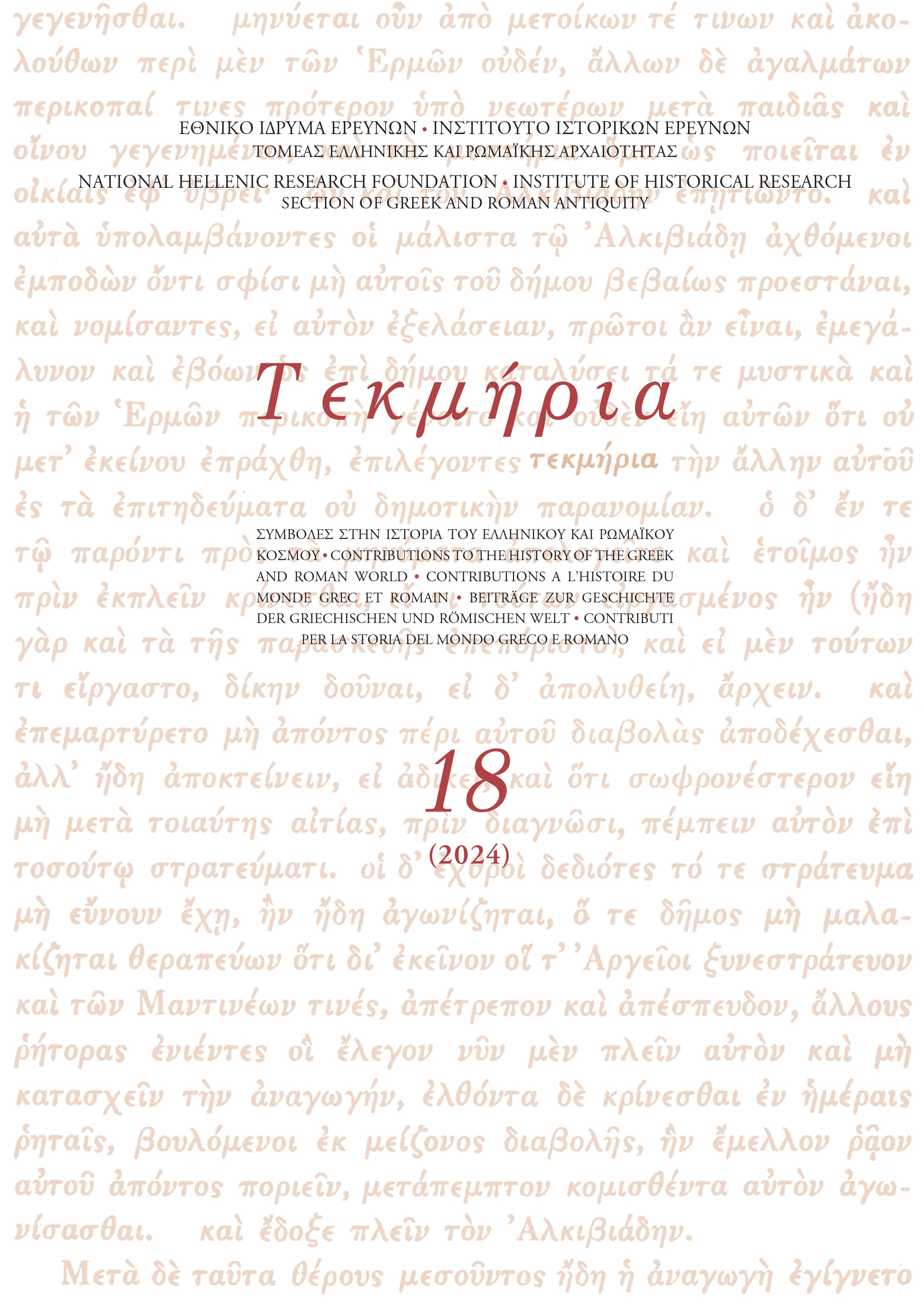Integrating Numismatic Evidence into the Study of the Urban Landscape of Paphos. From Palaepaphos to Nea Paphos with the Last King
Περίληψη
The discovery of a bronze coin, in the context of controlled excavations conducted by the Palaepaphos Urban Landscape Project (PULP) on the plateau of Palaepaphos-Hadjiabdoullah since 2009, presented the opportunity for a challenging collaborative dialogue on the integration of numismatic discoveries, as well as relevant inscriptions and literary sources, with the current results of the landscape analysis and the excavations that have contributed to the identification of the plateau as the citadel of the polis of Paphos in the Cypro-Classical period.
The identification of the coin as a bronze issue of either Timarchos (350? – 325? BC) or his son and last king of Paphos Nikokles (325? – 310/9 BC) leads first to an updated assessment of the state of research regarding the bronze coinage of the Paphian mint under its last fourth-century kings. The coin is then contextualised in the micro-environment of the recently located secular monument, a workshop complex, where it was found. A preliminary study of the ceramic material suggests that the workshop functioned contemporaneously with the palace, an architecturally impressive monument with which it shares the north side of the citadel.
The precarious state of the fourth-century phase of the palatial building, which suggests that it could have lost its official status before the abolition of the Paphian dynasty (an event historically dated to 310/9 BC), turns the discussion towards Nea Paphos, where five coins of the same type were also discovered during controlled excavations. It is hereby suggested that by exploiting the results of the landscape analysis conducted by PULP, in combination with the still limited archaeological evidence, the establishment of Nea Paphos can be approached from the perspective of its predecessor, the old capital of Paphos. The possibility that a fourth-century monetized society was already residing in Nea Paphos reopens the long-debated issue of its foundation
Λεπτομέρειες άρθρου
- Πώς να δημιουργήσετε Αναφορές
-
Iacovou, M., & Markou, E. (2023). Integrating Numismatic Evidence into the Study of the Urban Landscape of Paphos. From Palaepaphos to Nea Paphos with the Last King. Τεκμήρια, 18, 67–96. https://doi.org/10.12681/tekmeria.36215
- Τεύχος
- Τόμ. 18 (2024)
- Ενότητα
- Άρθρα

Αυτή η εργασία είναι αδειοδοτημένη υπό το CC Αναφορά Δημιουργού – Μη Εμπορική Χρήση – Παρόμοια Διανομή 4.0.
Οι συγγραφείς των άρθρων που δημοσιεύονται στα Τεκμήρια διατηρούν τα δικαιώματα πνευματικής ιδιοκτησίας επί των άρθρων τους, παραχωρώντας στο περιοδικό το δικαίωμα της πρώτης δημοσίευσης. Άρθρα που δημοσιεύονται στα Τεκμήρια μπορούν να χρησιμοποιούνται ελεύθερα για μη κερδοσκοπικούς σκοπούς, χωρίς δικαίωμα τροποποίησης (δημιουργία παράγωγου έργου), με αναφορά στο συγγραφέα και στην πρώτη δημοσίευση. Το Εθνικό Ίδρυμα Ερευνών διατηρεί το δικαίωμα να δημοσιεύει, να αναπαράγει, να παρουσιάζει στο κοινό, να διανέμει και να χρησιμοποιεί άρθρα που δημοσιεύονται στα Τεκμήρια σε οποιοδήποτε μέσο και μορφή, είτε μεμονωμένα είτε ως μέρη συλλογικών έργων, για όλο το χρόνο διάρκειας προστασίας της πνευματικής ιδιοκτησίας και για όλες τις χώρες του κόσμου. Αυτό περιλαμβάνει, ενδεικτικά και όχι αποκλειστικά, το δικαίωμα δημοσίευσης των άρθρων σε τεύχη του περιοδικού Τεκμήρια, αναπαραγωγής και διανομής μεμονωμένων αντιγράφων των άρθρων, αναπαραγωγής ολόκληρων των άρθρων σε άλλη έκδοση του ΕΙΕ, και αναπαραγωγής και διανομής των άρθρων ή της περίληψης τους με χρήση πληροφορικού συστήματος αποθετηρίου.



